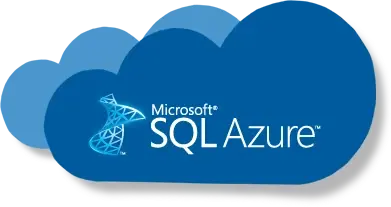How AI Can Boost Predictive Maintenance In Manufacturing
How can Artificial Intelligence be used for predictive maintenance in manufacturing? New software technologies are helping business operations.
As of the April 12th 2016, Extended support for Micrsoft SQL Server® 2005 ends. Of course, this does not mean it will just stop working, so what are the implications of running an unsupported version of SQL Server?

Let us first look at the 2 levels of support offered on by Microsoft in their Support Lifecycle – Mainstream Support and Extended Support.
This applies to the first 5 years (typically) of a products life, and inculdes:
Product change requests
Security Updates
Ability to request non-security hotfixes
Incident Support
This applies to the next 5 years (typically) of the products life and includes pretty much only security hotfixes and paid support.
When SQL Server 2005 leaves extended support, there will be no security or compliance updates, and no back up from Microsoft to your partner should there be an issue that the partner can’t resolve.
So, in reality what could this mean.
Well, no security updates means that potential vulnerabilities will not be fixed, but it’s been out there for 10 years, so they’ll all of been fixed by now … right? Well mostly, yes, but you can’t necessarily allow for all eventualities, and server updates have been known to break things … if it breaks SQL Server 2005, then it will most likely not get fixed in which case you will end up needing to continue on a non hotfixed server.
There are also compliance issues, for example, not complying with the Payment Card Industry (PCI) Data Security Standards could mean Visa and MasterCard will no longer do business with a company.
And there could be higher maintenance costs associated with maintaining legacy servers to run older versions of software.
The first option is do nothing, continue to run SQL Server 2005, it’s been running fine for the last 10 years, and providing you are not looking to upgrade your applications or servers anytime soon, then you’ll probably get another few years out of it. However, this option is not without it’s risks. Choosing this option may well be fine, and if security and compliance are not a concern, then it is a viable option, but if something does go wrong then you are likely to be faced with a last minute emergency upgrade rather than a planned migration or a costly role back of other upgrades in order to keep business critical solutions running. You may even have to run 2 versions of SQL if all your applications don’t support the same version.
The next obvious option is to upgrade, if you have software assurance then it is a no brainer, just do it (of course, after speaking to your support partners to make sure that the applications using your SQL Server back end are supported on the later versions of SQL Server … if they are not, then you should be asking them about an upgrade path). If you don’t have software assurance then there is an extra cost involved, this could be anything from free to a few hundred pounds or to several thousands, depending on the SQL edition you need, the number of users you require and the purpose for which you are using it.
The other option is to go to the cloud. A hosted SQL Server solution such as SQL Azure, can in many cases be a very cost effective solution, again depending on usage. SQL Azure is massively scalable, has high availability, automatic updates and the cost includes infrastructure, electricity and licensing. SQL Azure is therefore likely to be a good alternative if your applications support it and you have the required bandwidth.

For our Microsoft Dynamics® NAV and Microsoft SharePoint® customers, we will discuss SQL upgrade options at the time of upgrade, but in the meantime, if you have any questions then please drop us a line.
How can Artificial Intelligence be used for predictive maintenance in manufacturing? New software technologies are helping business operations.
Summarising technology changes for manufacturing companies in 2023 and what that means for 2024 such as artificial intelligence and industry 4.0
Manufacturing, Warehousing and distribution company Colorlites implements Business Central ERP with Dynamics Consultants in a phased approach